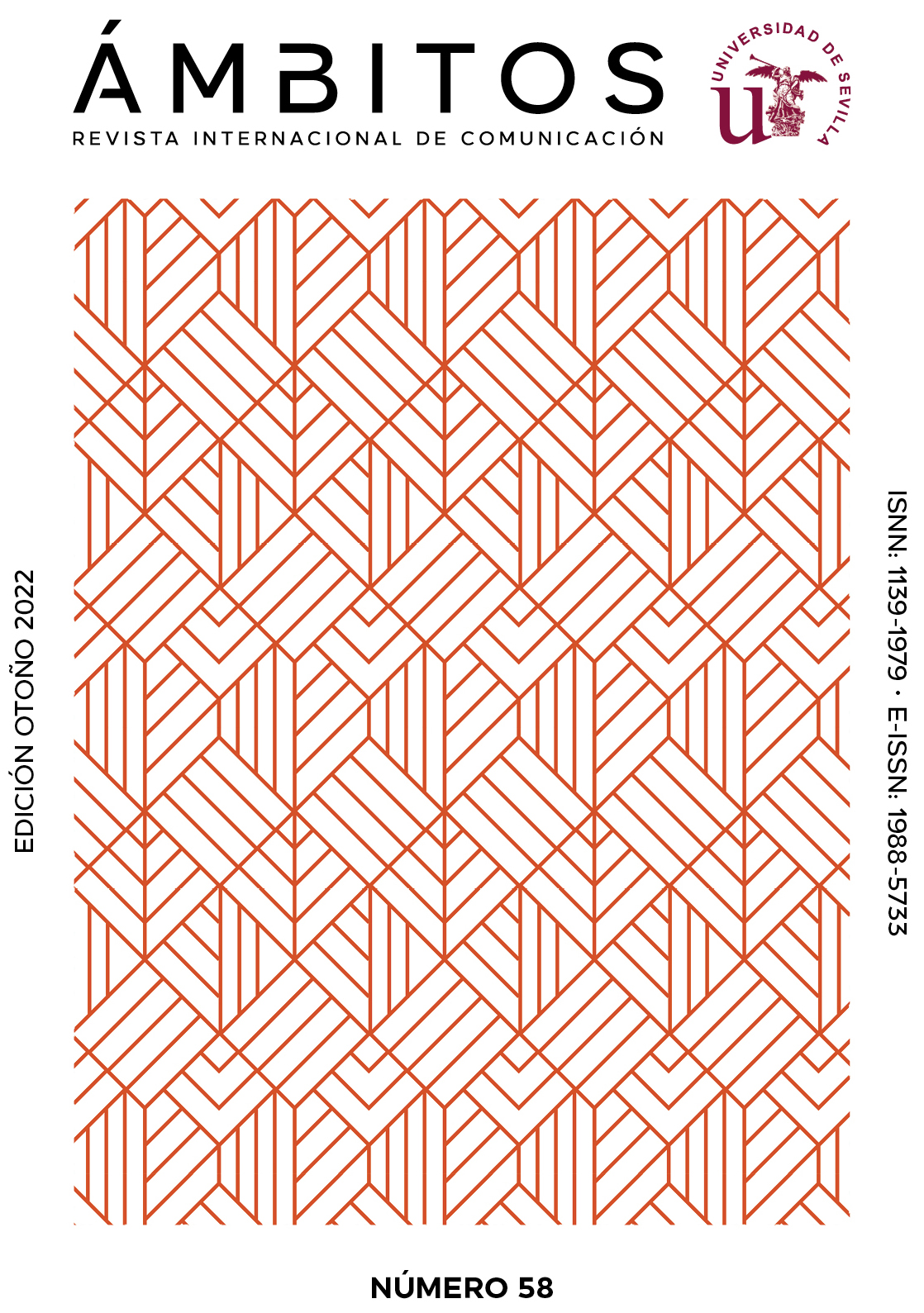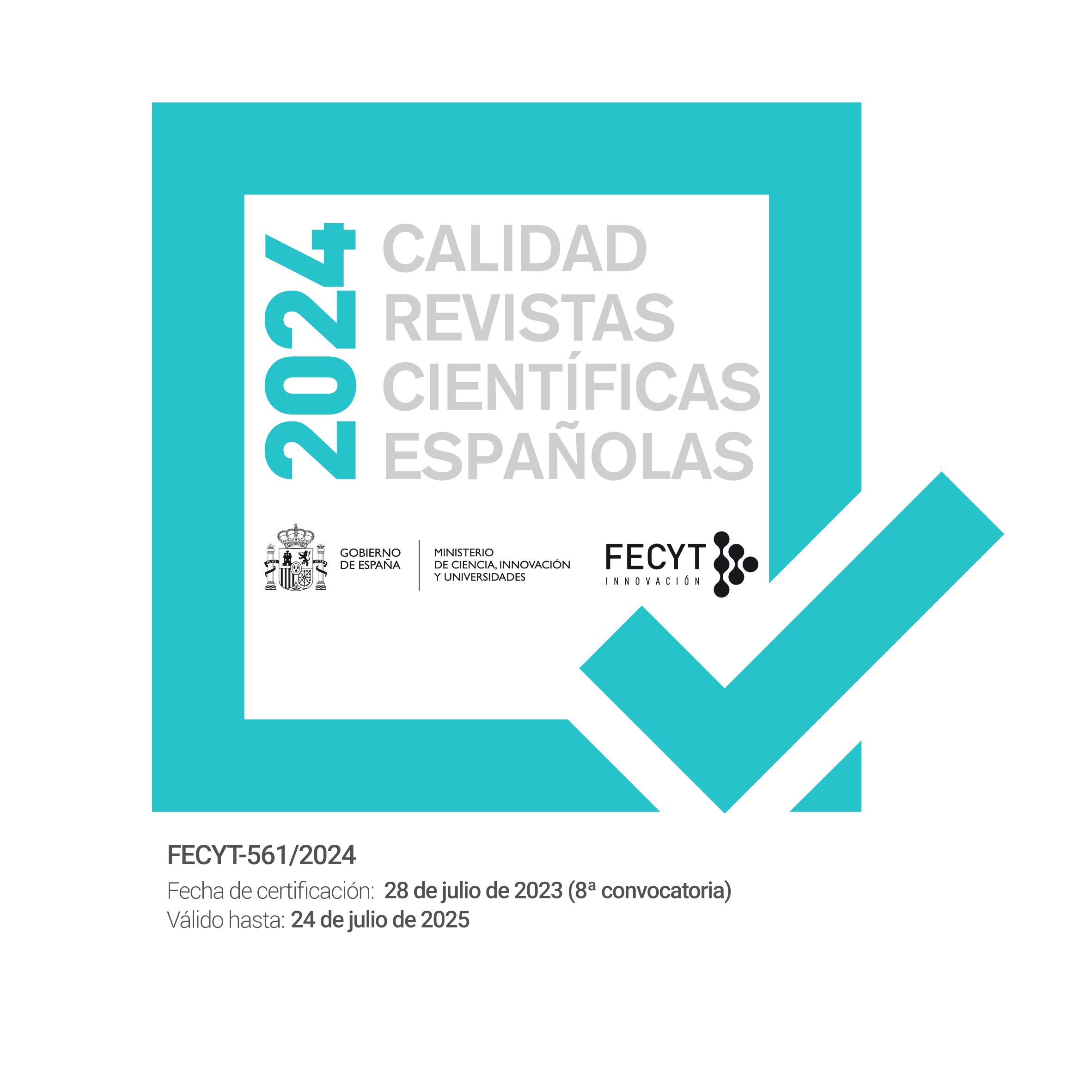Cultural journalism and temporality in the dossiers of the Brazilian magazine Cult (2019)
DOI:
https://doi.org/10.12795/Ambitos.2022.i58.03Keywords:
cultural journalism, temporalities, magazine journalism, diachrony, CultAbstract
This paper proposes a reading of the temporal dimension of cultural journalism, emphasizing the recurring characteristic of this editorial segment of updating the past and building memory by mediating culture. We draw on the experience of Cult, the longest-running Brazilian cultural magazine, which has been in circulation in the publishing market for 25 years. Based on the theoretical and methodological contribution of Paul Ricoeur’s hermeneutics, particularly his proposal for a triple mimesis, we analyzed a sample of six monthly editions published between July and December 2019, focusing on the main section, entitled Dossiers, through its covers and internal texts. From the temporal category of diachrony and the frameworks found in the sample of dossiers, we found evidence of the contextualizing character of narratives in the profile of magazine journalism. We identified diachrony through a recurrent absence of traditional journalistic chronological markers, one of the characteristics that drives the potential of the analyzed publication to recirculate over time, even if aiming at a restricted readership. We understand that Cult’s dossiers are affirmative resources of a cultural journalism that is in friction with the past through a slow and distended present time, showing itself in counterpoint to journalistic temporality commonly associated with speed, acceleration and instantaneous.
Downloads
References
Antunes, E. (2007). Temporalidade e produção do acontecimento jornalístico. Em Questão, 13 (1), p. 25-40. https://bit.ly/3RIwlJH
Badenes, D. (2017). Las revistas culturales como sector y como movimiento. In: Badenes, D. (Ed.). Editar sin patrón. La experiencia política-profesional de las revistas culturales independientes 13-30. Club Hem Editores.
Borrat, H. y Fontcuberta, M. (2006). Periódicos: sistemas complejos, narradores em interación. La Crujía.
Faro, J. S. (2006). Nem tudo que reluz é ouro: contribuição para uma reflexão teórica sobre o jornalismo cultural [ponencia]. Encontro Nacional de Pesquisadores em Jornalismo. Faculdade de Biblioteconomia e Comunicação, Universidade Federal do Rio Grande do Sul.
Fontcuberta, M. (1999). A notícia: pistas para compreender o mundo. Notícias.
Franciscato, C. (2005). A Fabricação do Presente. Editora da UFS.
Gadamer, H. G. (2006). O Problema da Consciência Histórica. Fundação Getúlio Vargas.
Gadini, S. (2009). Interesses cruzados: a produção da cultura no jornalismo brasileiro. Paulus.
Golin, C., Cardoso, E., Keller, S. y Muzykant, P. (2010, 8-10 de novembro) Jornalismo e representação do sistema cultural: a identidade das fontes na cobertura de cultura do jornal Diário do Sul (Porto Alegre, 1986-1988) [ponencia]. VIII Encontro Nacional de Pesquisadores em Jornalismo. Faculdade de Comunicação, Universidade Federal do Maranhão. São Luís, Brasil.
Gomis, L. (1991). Teoria del periodismo: como se forma el presente. Paidós.
Hartog, F. (2005). Time and heritage. Museum International, 57, 7-18.
Lückman, A. P. (2020). A noção de contexto no Jornalismo: uma proposição a partir da Teoria da Complexidade. [Tese de Doutorado, Universidade Federal do Rio Grande do Sul]. Repositório Institucional UFRGS. https://lume.ufrgs.br/handle/10183/212486
Luna, V (2017). Formas de crítica para nomear uma época. En: Badenes, D. Editar sin patrón. La experiencia política-profesional de las revistas culturales independientes, 257-289. Club Hem Editores
Oliveira, G. M. V. S. (2015). Da popularização da filosofia à expertise filosófica: uma problematização do papel do intelectual na mídia. Revista CULT 1997-2013. [Dissertação de Mestrado, USP].
Piza, D. (2003). Jornalismo cultural. Contexto.
Ricoeur, P. (2010). Tempo e narrativa. WMF Martins Fontes.
Rivera, J. B. (2003). El periodismo cultural. Paidós.
Quiroga, T. (2017). Consciência histórica, hermenêutica e suas origens no Romantismo Alemão. In: Porto O, S. D.; Mota, C. L. (Ed.). Hermenêutica e análise dos discursos em jornalismo, 47-73. Insular.
Soares, M. B. (2012). Poesia em revista: O apagamento do tema nos periódicos Bravo! e Cult. [Dissertação de Mestrado, Universidade Federal do Rio Grande do Sul].
Tavares, F. M. B. (2020). Jornalismo e colecionismo: elos para pensar memórias e valores editoriais. In: Prado, D. F. B; Tavares, F. M. B.; Tavares, M. da S. (Ed). Mídia, tempo e interações sociais: conceitos em circulação, 285-311. Selo PPGCOM/UFMG.
Tétu, J.F. (2000). La temporalité des récits d’information. In: Vitallis et al. (Ed.). Médias, temporalités et démocratie, 91-108. Apogée.
Tsusui, A. L. N. (2006). Revista Cult: canal de expressão pública da produção cultural. [Dissertação de Mestrado, Universidade Metodista de São Paulo].
Vogel, D. (2008). O jornalismo cultural contra a comunicação. Cultura e Mercado.
Zambrano, M., Villalobos, O. (2010). Presencia del periodismo cultural y de espetáculo en la prensa zuliana. Anagramas: rumbos y sentidos de la comunicación, 9 (17), 67-82.
Zamith Silva, F. A. D. (2011). A contextualização no ciberjornalismo. [Tese de Doutorado, Universidade do Porto].
Downloads
Published
How to Cite
Issue
Section
License
Copyright (c) 2022 Anna Cavalcanti, Cida Golin

This work is licensed under a Creative Commons Attribution-NonCommercial-ShareAlike 4.0 International License.
Ámbitos. Revista Internacional de Comunicación is an open access journal, which means that all content is freely available at no charge to the user or their institution. Users may read, download, copy, distribute, distribute, print, search or link to the full text of articles, or use them for any other lawful purpose, without seeking prior permission from the publisher or author. This definition of open access is in accordance with the Budapest Open Access Initiative (BOAI).

Unless otherwise noted, all content in the electronic edition is distributed under a "Creative Commons Attribution-NonCommercial-ShareAlike 4.0 International License". You can consult the informative version and legal text of the licence here. This should be expressly stated in this way where necessary.
In case of acceptance of the manuscript, the authors cede the rights of the work for its publication to Ámbitos. Revista Internacional de Comunicación under the Attribution-NonCommercial-ShareAlike 4.0 International license contract (CC BY-NC-SA 4.0). The authors retain copyright and third parties are authorised to copy, distribute and make use of the work, provided they comply with the terms and conditions set out in the licence
- Cite the authorship and the original source of publication (journal, publisher and URL of the work).
- Do not use them for commercial purposes.
- If you remix, transform or create from the material, you must release your contributions under the same license as the original.
More information can be found at https://creativecommons.org/licenses/by-nc-sa/4.0/deed.es


















